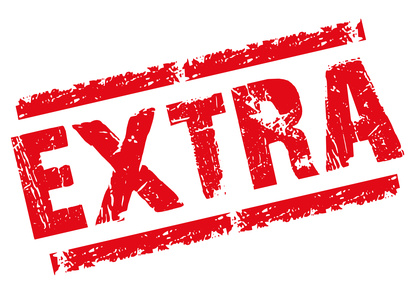I’ve been doing a lot of frontlist buying the last month, and have noticed a lot of publishers are offering specials where buying five copies of a particular title will earn you an extra 3% discount. So, if a book would normally be purchased at 46% discount, you can get 49% on the ones the publisher is  promoting. I’ve often wondered just how much of a deal this really is.
promoting. I’ve often wondered just how much of a deal this really is.
In the world of tight margins this offer seems like a good deal. The ABA usually offers a class on the 2% solution, theorizing that if bookstores could just lower their cost of goods sold an extra 2% they would be more profitable. This makes sense. The more that stores can save upfront, the better position they’ll be in to make money on each book purchase. But, what if taking a five books for an extra 3% isn’t really a deal?
Let’s take a look at one book, a $15.99 book purchase. At a standard discount of 46% it’s going to cost $8.63 per book for under five. That’s a savings of $7.36 per book. Now let’s add in an additional 3%. This brings it to $8.15 a book. A savings of 48 cents per book for the extra percentage. So, if I was buying three of something and was then persuaded to buy to two additional titles to get the extra 5%, I’d be saving just shy of a dollar a book. But the thing to remember is, by bumping up more order to five books over three, the store is going to obviously pay more for the books and can that expenditure be justified?
The tricky part for stores to figure out is will they be able to sell the extra books. If the answer is yes, then they’ve made the right decision. But if you are reasonably only likely to sell the three, and you’ve spent $14 more to get the five book to save $2 then you’ve likely made a bad choice. The allure of extra discounts can be very hard to ignore. Everyone wants to save money in as many ways as possible, but five copies of a book can be a lot for small stores that buy conservatively. However, if a store is on the fence about four copies of a book, then bumping up your order to five might make more sense.
This is the real finesse of frontlist buying. It’s a constant guessing game of what your customers will want and what will actually sell. Five copies of a title sends the message that the store is behind a book, and that is often enough to get folks to pick it up and hopefully buy it. But, five copies of a book can be too many and then six months later you’re spending money to return the books and losing the extra savings in shipping back to the publisher.
Frontlist buyers, what are your thoughts on ordering more to get an extra 3%?

You hit the nail on the head, Josie. Whether you’ll be able to sell the extra books becomes the real question here. Will a faceout or shelf talker kick the sales up enough to justify the extra inventory? It’s always going to be a guess; you just need to trust your instincts and experience enough to make the right call. (Hint: you won’t always make the right choice. We’re aiming for being right more often than being wrong here).
One of the important parts of The 2% Solution (praise be to the late Avin Domnitz) was to point out that turns are worth more than discount. When money is cheap, the advantage is less clear. But if you’re paying interest on that $14.00, or if the $14.00 could be earning something in the bank, or (more likely) you’re skipping some other title(s) because you’ve tied up your money in the surplus copies — order one. MAYBE 2. Sell it/them, re-order, and you’re ahead. This is also why rapid re-order fulfillment is in the interest of the publisher. Turns help everybody. In broader terms, KEEP THE MONEY MOVING.
Maybe someone else can explain (I have never been able to guess) what the advantage of a BOGO, or a 3 for 5 would be to the party offering it. Sure, it moves stuff out of the warehouse — until you start to think of the bookstores’ shelves as auxiliary warehouse space. Why is the rent on your store’s shelf space 48 cents per book? Is that fair in view of your rent?
If you want to play with LOTS of numbers, measure your linear shelf footage. Divide your annual rent by footage. That’s the annual cost of a foot (or inches and months, if you want to granulate further) of shelf space, the part that earns the revenue that pays for everything else .
All the publishers I sell offer 3+ or 5+ for 50% which is up from their usual 44%, a savings of 6%. I’m on vacation so won’t do the math, but with 120 day billing from one of them, this extended time to pay allows for the greater chance of selling some first. Still a sharp pencil is always good.